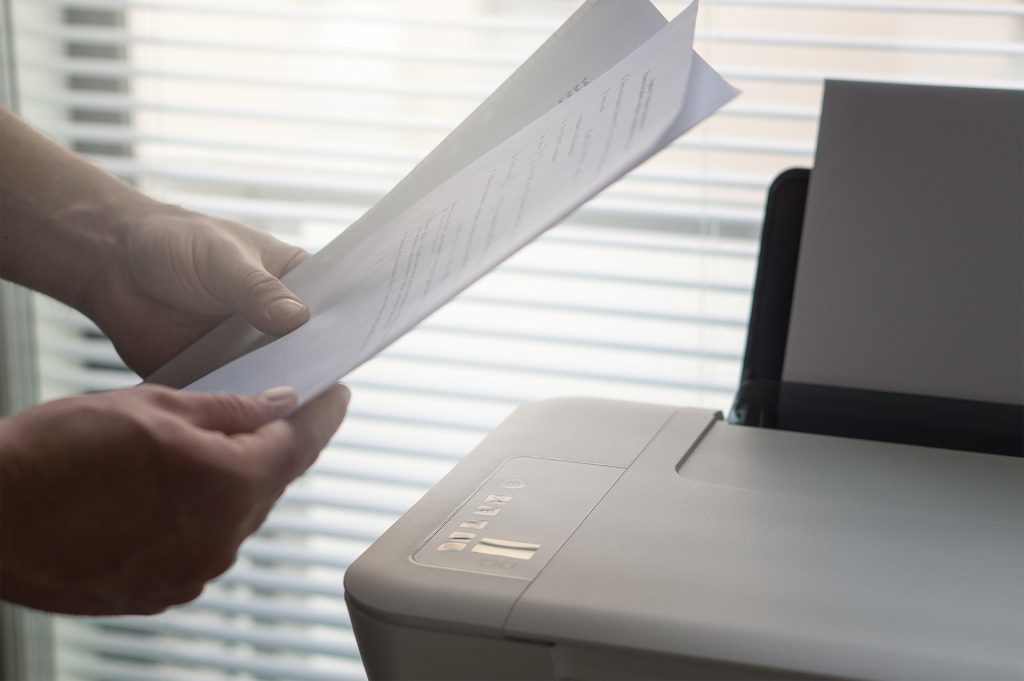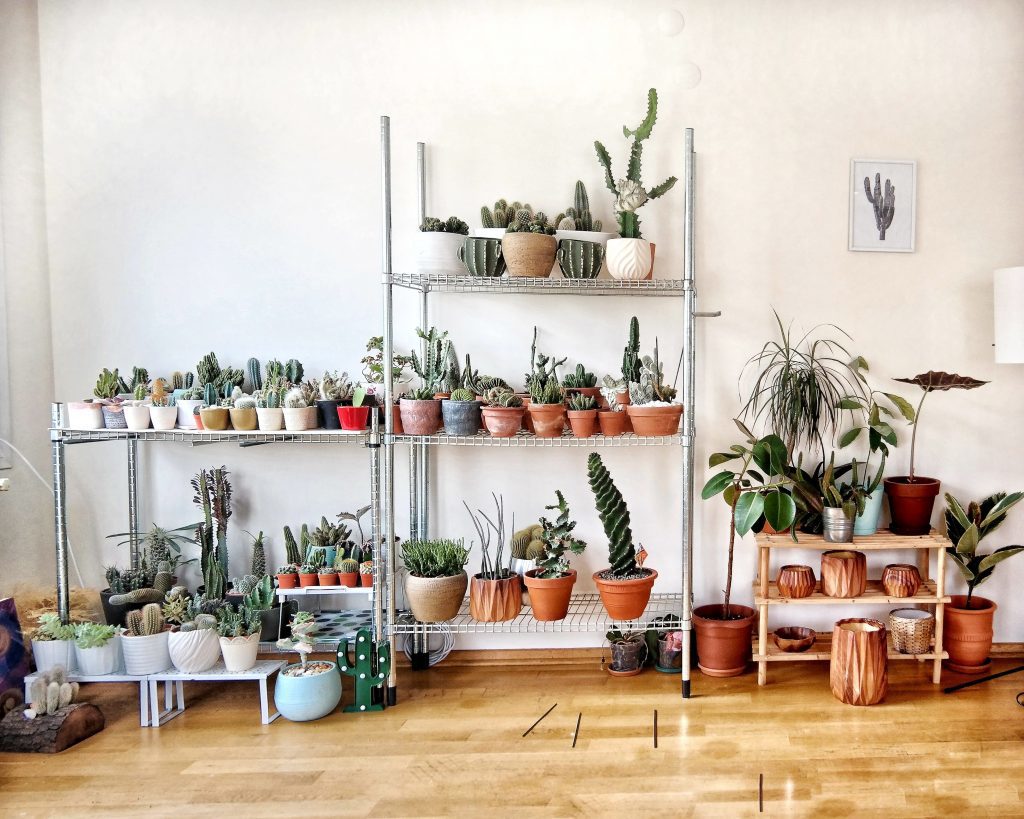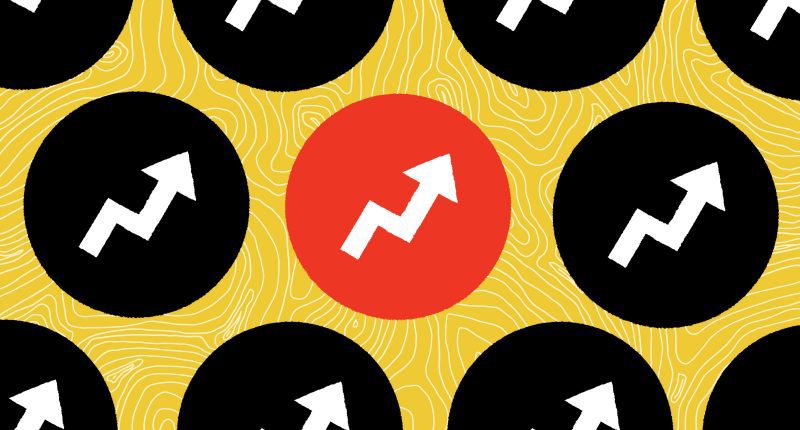I was livid. “If you scored three or more Cs, you should be a NEWS AGGREGATOR,” the quiz declared. “You don’t need original content when you can have cute cat listicles.”
I was able to snag a copy of the Ryerson Review of Journalism’s spring 2015 edition when I found it lying in front of the RRJ office. In it was a quiz titled, “OMG! Do you dream of being a journalist?” As a first-year journalism student who had no idea what she was doing, I just had to know the answer. The RRJ looked so reputable that I expected the quiz to cure my identity crisis, and then some.
During my first attempt, I answered each question truthfully, making sure each circle I drew was tightly closed. But when my score revealed that I was destined to write listicles (articles told in list form), it struck a nerve. I wasn’t making my family shell out thousands of dollars on journalism school to write clickbait and use gifs, à la BuzzFeed, for a living.
So, I went back to those questions, violently scratching off each circle and erratically choosing different answers. This time, I got a tie between “COLUMNIST” and “GONZO JOURNALIST.” In fairness, the quiz had a satirical tone, equally poking fun at each type of journalist featured. Still, I felt ashamed for circling an answer like, “Fifty words? That’s as long as two articles!” Emotionally exhausted, I hid the magazine in my bookshelf, hoping that I would never have to deal with that quiz again.
Now I’m here, trying to convince people that BuzzFeed is eminent not only in the digital world, but also in the journalistic world.
BuzzFeed is notorious for its enticing website and video titles, often being accused of creating clickbait-style engagement. But other than listicles, aggregating tweets, and Tumblr posts and videos exploring which bagel place is worth the price, one key component of the multibillion dollar giant is its journalism.
According to SimilarWeb’s February 2019 overview, most users who visit BuzzFeedNews.com come from BuzzFeed.com, and most people who leave BuzzFeedNews.com arrive at BuzzFeed.com. It may well be the secret ingredient to maintaining a robust online following. Their news is no joke, either: BuzzFeed News, which has been around since 2012, receives praise for its digestible breakdowns of complex news stories, as well as in-depth investigations. Its seven-part investigation into a Russian assassination plot was nominated for a Pulitzer prize in 2018.
BuzzFeed Canada opened its Toronto office in 2015, the same year I started studying journalism. I was able to meet a few reporters from BuzzFeed Canada over the past four years, either in class or at school-related events. I’d always hold back questions about how light content, like quizzes approximating when quiz-takers will die, affects their original reporting.
But over the years, I have become almost able to answer that question myself. In my room, I often jot down things onto pad paper with the BuzzFeed logo emblazoned on top. I also have one of its iconic yellow stickers. Mine says “perf,” and whenever I look at it on my magnetic board, I lament the one I lost that said “sorry.”
Having gifs coexist with news may be a far cry from how newspapers structure their reporting, but in a flurry of depressing news in journalism and elsewhere, it gives journalists a space to make their jobs more fun. As BuzzFeed News reporter Jane Lytvynenko tells me, “It’s like there’s a playhouse in journalism, and you get to go into the playhouse and do whatever you want and then put that out into the world as your good work. It’s the best job.”As the digital media playing field continues to shift, BuzzFeed and BuzzFeed News will keep shifting with it. And you’re never going to believe what BuzzFeed News has in store for us next.

3 Reasons Why Listicles Are the News of the Future
When it comes to telling the news, the typical inverted pyramid scheme sometimes isn’t the best way to explain the intricacies of current affairs. Craig Silverman, BuzzFeed Canada’s media editor, tells the RRJ that alternative formats like listicles and quizzes (like BuzzFeed News’ weekly fake news quizzes) can make news more approachable and engaging. “I’m just always aware [that I] would get criticism for it, but it never really bothered me that much because I do think it’s important to experiment with new ways of getting information to people, particularly when folks are so distracted today,” Silverman says.
In 2011, BuzzFeed editor-in-chief Ben Smith argued in Foreign Policy that listicles “are the news of the future.” Here are three reasons why he thinks this way:
1. Regardless of how engrossed younger generations are with pop culture and other distractions, they still care about current events
Smith writes that “this is a difficult era for snobs”—the ones who are quick to dismiss a younger generation that knows iPhone commands and Vine (RIP) references by heart. The reality is that the same kids using dog filters on Snapchat are often at the forefront of political movements like Black liberation and gun control, using their social media accounts to advocate for their beliefs.
2. Young people need news outlets that validate them
They want to be involved in current events, but sometimes legacy outlets aren’t the kindest to this demographic (we will never forget when the Guardian featured a millionaire who blamed the housing crisis on avocado toast). So, they turn to websites like BuzzFeed News, which makes complicated matters more digestible to younger readers without being patronizing.
3. News can work symbiotically with viral memes
Now that people can and do share the interesting things they find on the internet, Smith writes that this creates an entirely new front page for the digital world, one that allows photos of pugs and articles about the opioid crisis to coexist. Essentially, people are able to stay informed even if they’ve logged on just for distraction—they come for the memes and stay for the news. “Don’t make the mistake of thinking that just because the social web is full of cat pictures, great journalism is dying,” Smith writes.

4 BuzzFeed Investigations You NEED to Read
Although quizzes and listicles are the name of BuzzFeed’s game, they still do their fair share of long-form, heavily researched investigative journalism. Grab your blue light-cancelling glasses, sit comfortably and brace yourself: these are lengthy, fascinating reads riddled with original reporting and extensive investigations that are sure-fire page-scrollers.
1. “How A Canadian Yellow Vest Site Used Fake Accounts And Marketing Savvy To Monetize Outrage” by Craig Silverman and Jane Lytvynenko (for BuzzFeed News) and Alex Boutilier and Marco Chown Oved (for the Toronto Star)
In a non-monetary partnership with the Toronto Star, BuzzFeed News is investigating how certain groups and individuals are affecting political conversations surrounding the upcoming 2019 Canadian federal elections. This first report delves into the marketing ploys of right-wing social media accounts.
2. “Above the Law” by Bruce Livesey
This 2017 investigation into police misconduct in Calgary highlights the lack of nationwide data about negligence in law enforcement, and features families who were hurt by alleged malpractices.
3. “We Saw Nuns Kill Children: The Ghosts of St. Joseph’s Catholic Orphanage” by Christine Kenneally
With the help of court documents from the ’90s and remaining survivors, this investigation traces the child abuse that infected a Catholic orphanage in Burlington, Vermont. It was published weeks after an extensive report on Roman Catholic dioceses by the Grand Jury of Pennsylvania. It’s supplemented with eerie photographs from St. Joseph’s past and present.
4. “The Money Trail” series
Stories from “The Money Trail” series keep a close eye on United States-Russia relations. Their most rousing investigation so far reveals that President Donald Trump directed his attorney to lie about plans to build a Trump tower in Moscow. Despite denials from Trump and skepticism from his supporters, editor-in-chief Ben Smith reportedly stands by his team’s reporting.
[os-widget path=”/cg4/you-re-an-internet-noob-if-you-can-t-tell-if-these-headlines-are-from-buzzfeed-or-from-buzzfeed-news”]

3 Elements The BuzzFeed News Website Takes From Traditional Newspaper Design
In the summer of 2018, BuzzFeed News got its own website, separating it from their more laidback counterpart. “What we’ve learned over the years, the average BuzzFeed audience member wants both news and the classic BuzzFeed buzz content,” Silverman says. “So, even though news now sits on its own domain and the brands are often thought of as connected but different, you still want to serve news to people who are on BuzzFeed.com, and you still want people on BuzzFeed News to have a sense of what’s on BuzzFeed.com. So, it’s a way of mutually reinforcing each site.” Steve Dorsey, vice president of news performance and partnerships at GateHouse Media, examines BuzzFeedNews.com and points out similarities the site has to traditional newspapers and trends he’s noticing with online news design.
1. It’s monochromatic with a few splashes of colour
Unlike its entertainment counterpart, which is more playful with its colour scheme, BuzzFeed News’ website is monochromatic, accented with splashes of red and yellow to stay consistent with the BuzzFeed branding.
2. It uses a serif font for its logo and headlines
If you’re attempting to make a website look more mature and serious, a serif font is just your type. It makes sense, considering how newspapers have used serif fonts (like Times New Roman or Georgia) since the creation of the printing press, Dorsey says.
3. The homepage is designed to highlight the top story of the day
Rather than displaying each story equally, BuzzFeed News presents its homepage content in a hierarchical order, emphasizing the top news story at the moment. It’s also able to change its top stories frequently throughout the day. This is where BuzzFeed News greatly benefits from being an online-only news outlet. “When you get into talking about a newspaper that has that legacy print component, it’s hard to let go of the segregation of news into state, local business, feature, or whatever,” Dorsey says. “And I think by not having the weight and the burden of a print component, [BuzzFeed News] just has whatever’s happening today. In fact, I’m watching [the website] and it’s updating right before my eyes.”

3 Ways BuzzFeed News Finds Credibility In The Journalistic World
Paul Stringer, a UK-based researcher, saw a huge gap in the academic field when it came to researching Vice or BuzzFeed. And that’s what he decided to do in his 2018 scholarly article, “Finding a Place in the Journalistic Field.” “I was really keen on kind of expanding our understanding of how journalism is evolving online. And I thought BuzzFeed and Vice would be really interesting case studies to do that because they had received almost no attention despite growing fairly rapidly and achieving a lot of success fairly quickly in their young lives,” Stringer says. With the help of anonymous BuzzFeed sources, Stringer was able to find these three things about the media giant.
1. In with the old and in with the new
In his paper, Stringer found that BuzzFeed’s mix of young reporters and seasoned editors gave the company the advantage of producing fresh content built on a traditional news foundation. This allows them to build a stronger connection with a younger audience while still maintaining journalistic principles like accuracy and verification. “What we’re seeing is a broader cultural shift towards LGBT rights, civil rights, and gender equality becoming much
more important issues for the culture at large,” Stringer says. “As these become more important issues, they lend new organizations who are much better at covering [them] than traditional media, more legitimacy.”
2. …But don’t forget to be serious, too
When it comes to building trust, however, it can’t be all fun and games. “One of the more straightforward ways for new organizations to build credibility is by focusing on culturally-esteemed areas of reporting or forms of journalism, like investigative journalism, politics, or hard news coverage,” Stringer says. “That, particularly investigative journalism, is the kind of journalism that gets respect from peers and gives [them] cultural legitimacy.”
3. News can be used for reinforcing their brand
BuzzFeed CEO Jonah Peretti has said that diversification is key for BuzzFeed to survive the digital world, which is why they allow memes and current events to coexist. “I think they still see it as an important part of their business, and I think they also see it as playing an important role in lending legitimacy to their wider brand, which is a really important thing for BuzzFeed because they’re primarily still perceived as an organization that makes humor and entertainment content,” Stringer says.
[os-widget path=”/cg4/were-you-actually-paying-attention-to-buzzfeed-s-monumental-round-of-layoffs”]

3 Initiatives To Help Recently Laid-Off BuzzFeed Employees
Perhaps the most positive outcome from BuzzFeed’s massive layoffs is how people were quick to show support and solidarity, both inside and outside the company. Here are three online acts of kindness made in the hopes of helping the recently unemployed get back on their feet.
1. BuzzFeed Beer Fund
Like several of his colleagues, BuzzFeed News copy editor Emerson Malone was quick to act once he heard about the layoffs. Around three days after news of the layoffs was leaked, he started a beer fund where people can donate money online so they can buy recently laid-off BuzzFeed employees a drink. Malone, 25, anonymously threw in $50 before the fund started gaining traction. He ended up collecting over $8,500, which he plans on sending to all BuzzFeed employees affected by the layoffs, including at the Los Angeles office where he works. “The level of generosity has been so humbling and it’s been incredible,” Malone says. “The support system in all of this has been really strong, both in the office and externally.”
2. Hire a BuzzFeeder
The doom and gloom of BuzzFeed’s layoffs also reached computer science student Alexandre Mouriec, 22, who lives in Northwestern France. Mouriec is an avid reader of BuzzFeed News; it helps him improve his English and it keeps him connected to what happens in the United States. He created Hire a BuzzFeeder, a website that lists recently laid-off BuzzFeed employees to make it easier for employers to find them. Currently, over 130 employees are listed on the site, with help from retweets and replies (Ben Smith now follows him on Twitter). “I would like to have less people [on the website] because it would mean that there aren’t many layoffs, but I know that there are layoffs so I’d like to help them as much as possible,” Mouriec says.
3. CJR’s thread “for anyone who has been laid off”
Mathew Ingram is a chief digital writer for the Columbia Journalism Review and has written about BuzzFeed News since its early years. He started a simple conversation thread where recently laid-off employees can promote themselves and employers can advertise their job openings. “[At CJR,] everyone knows someone at BuzzFeed, [and] we all know what it’s like to be laid off,” Ingram says. “I’ve been laid off multiple times…So, I think we all feel this particularly personally.”

4 Stories of BuzzFeed’s Toronto Office And Its Drive To Unionize
In the wake of BuzzFeed’s layoffs, BuzzFeed News’ American offices decided to apply for unionization, which Peretti reportedly deemed unsuitable for the company back in 2015. Following their American BuzzFeed News colleagues, BuzzFeed News breaking news editors Lauren Strapagiel and Jane Lytvynenko are leading the efforts to unionize BuzzFeed’s Toronto office.
The office, which consists of about a dozen employees, had one person laid off. But since they have a smaller staff count, they are able to include workers who produce BuzzFeed Originals’ content. And in March 2019, BuzzFeed Canada officially unionized with the Communications Workers of America (CWA Canada). They are the first North American office to unionize BuzzFeed Originals employees. And four months later, BuzzFeed News’ union was officially certified. Here’s what went down in the Canadian office before their unionization.
1. This isn’t the first time they’ve considered unionization
About a year ago, editorial employees at the Canadian office had a casual, preliminary conversation with the CWA Canada that didn’t result in much. But when BuzzFeed News jumped onto applying for unionization in the aftermath of the layoffs, they knew it was time to continue where they left off. “We’re a very small office, so we weren’t sure if we could do it by ourselves, but that international unity has really helped propel us forward for this,” Lytvynenko says.
2. Despite all the buzz, applying for unionization can be pretty boring
One of the biggest obstacles with unionization is its tedious application process. When they got to work, Strapagiel and Lytvynenko had to write a statement and send an email to the company. They also needed to collect enough signed cards from their colleagues (which they did). “We had to fax the application,” Strapagiel says. “Who faxes things?”
3. Unions are what employees make of them
Lytvynenko says that one deterrent for workers in the digital industry is the fear of having to stick to only one job. If someone has a contract to be a print reporter, for example, then they fear that they won’t be able to work on video or other multimedia. But when speaking with their union representative, Lytvynenko and Strapagiel made it clear they want flexibility with their roles. “I think that it’s really important that if anybody else considers this process, they [need to] understand that whatever misconceptions there have been about unions in the past, the union is what the workers make of it,” Lytvynenko says. “Nothing is set in stone unless we set it in stone.”
4. Just because they want to unionize doesn’t mean they’re unhappy
“I believe that [unionizing] is really important no matter how well your company treats you. And like we’ve said, our company treats us well,” Strapagiel says. Unionization is their way of having their rights written down, guaranteed to ensure that they don’t lose their jobs without negotiation. “Really, it’s a matter of having peace of mind that your company is going to continue to treat you well,” Strapagiel says.

Two Of BuzzFeed News’ Money Moves That You Might Not Have Heard Of Until Now
When it comes to funding news, things can get tricky. It’s not easy making people want to pay for their news without completely restricting access to vital information. “That’s what I think a lot of digital brands don’t realize, necessarily. The brands that don’t make it, they think you’re supposed to monetize your content. And BuzzFeed has said no—we’re going to monetize our audience,” says Bree Rody-Mantha, a news editor from Media in Canada. “It goes to show that they actually put a lot of value and they’ve put a lot of stock in their own millennial demographic.” According to Bloomberg, BuzzFeed’s commerce division has raised $50 million in sales in 2018. Here are two ways BuzzFeed News is helping fund their journalism while keeping it barrier-free.
1. BuzzFeed News’ membership program
Although it’s been a growing trend for online news sites, BuzzFeed News vows to its readers that it will never have a paywall. But that doesn’t mean that they aren’t giving opportunities for their readers to give monetary support. So, instead of blocking their news with a popup, they invite their readers to “become a BuzzFeed News Member.” According to BuzzFeed News’ manager of communications, Katie Rayford, the membership program garnered “tens of thousands” of dollars in revenue after launching in late 2018.
So, $5 (USD) a month will get you exclusive emails on big scoops, new stories and other behind-the-scenes tidbits. And paying $100 (USD) a month will get you those emails and a swanky black tote bag with the BuzzFeed News logo printed on it in glossy black.
2. Brand partnerships
One particular collaboration was with plant care company Scott’s Miracle-Gro Co., which, in collaboration with BuzzFeed and its expertise on millennial behaviour patterns, created Lunarly, a subscription service that mails houseplants based on the lunar calendar. According to Bloomberg, Lunarly has sold out repeatedly, which was created in response to how popular posts about mindfulness were on BuzzFeed.
“We help brands connect to their target audiences through sponsored editorial segments, since we already cover subjects and topics that can resonate with a brand’s campaign theme,” Rayford wrote to the RRJ. On their Twitter show, AM2DM, for example, they did a segment on how busy parents can use playtime to connect with their children. Lego sponsored this segment, using it to promote their playsets for The Lego Movie 2.
[os-widget path=”/cg4/what-kind-of-buzzfeed-content-creator-are-you”]
This story appeared in the RRJ’s Spring 2019 issue. This version has been updated to include BuzzFeed News’ July 2019 unionization.
About the author
Celina Gallardo is the 2018/19 editor and chief visuals editor for the Ryerson Review of Journalism.

